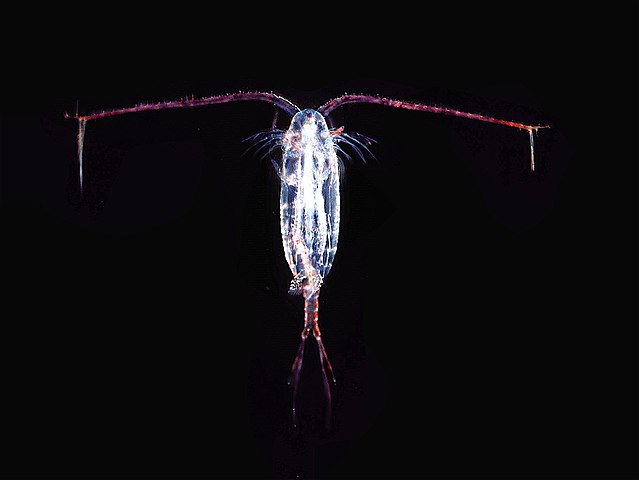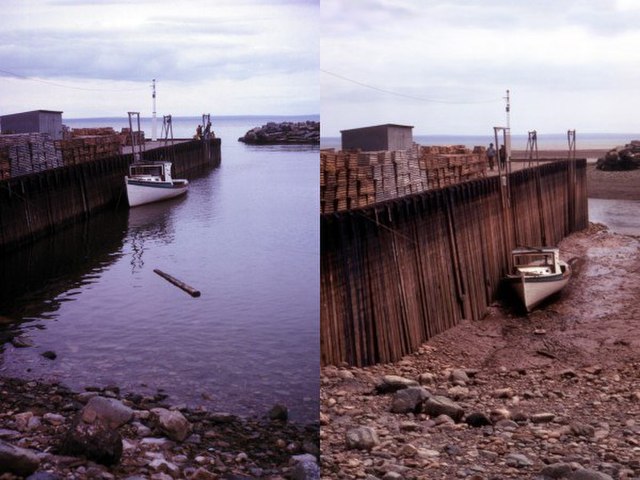The Arctic Ocean is the smallest and shallowest of the world's five major oceans. It spans an area of approximately 14,060,000 km2 (5,430,000 sq mi) and is known as one of the coldest of oceans. The International Hydrographic Organization (IHO) recognizes it as an ocean, although some oceanographers call it the Arctic Mediterranean Sea. It has also been described as an estuary of the Atlantic Ocean. It is also seen as the northernmost part of the all-encompassing World Ocean.
Thule archaeological site
A copepod
Sea cover in the Arctic Ocean, showing the median, 2005 and 2007 coverage
On the sea ice of the Arctic Ocean temporary logistic stations may be installed, Here, a Twin Otter is refueled on the pack ice at 86°N, 76°43‘W.
The ocean is the body of salt water that covers approx. 70.8% of Earth. In English, the term ocean also refers to any of the large bodies of water into which the world ocean is conventionally divided. Distinct names are used to identify five different areas of the ocean: Pacific, Atlantic, Indian, Antarctic/Southern, and Arctic. The ocean contains 97% of Earth's water and is the primary component of Earth's hydrosphere, thus the ocean is essential to life on Earth. The ocean influences climate and weather patterns, the carbon cycle, and the water cycle by acting as a huge heat reservoir.
Pacific Ocean side, Apollo 11, July 1969
Praia da Marinha in Algarve, Portugal
The ocean is a major driver of Earth's water cycle.
High tide and low tide in the Bay of Fundy, Canada.








